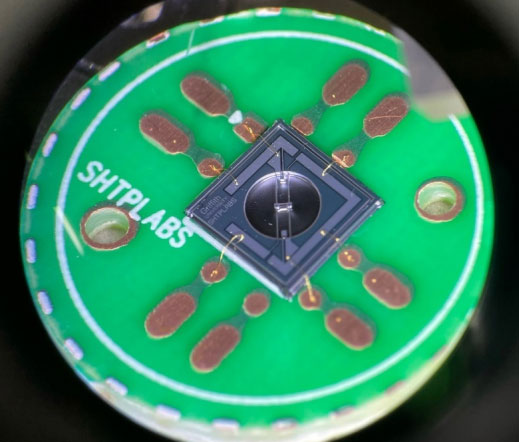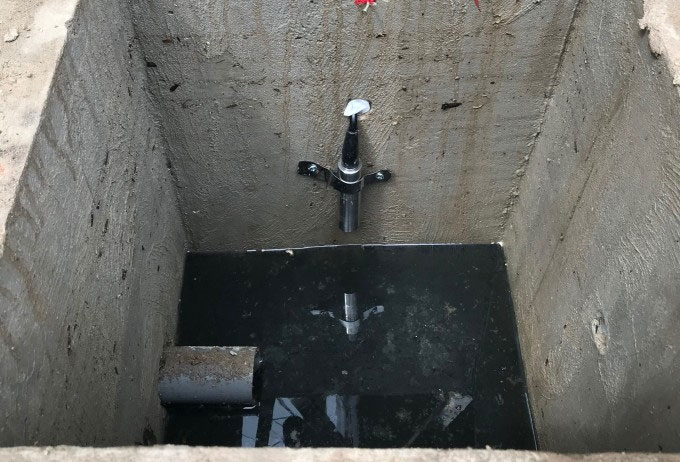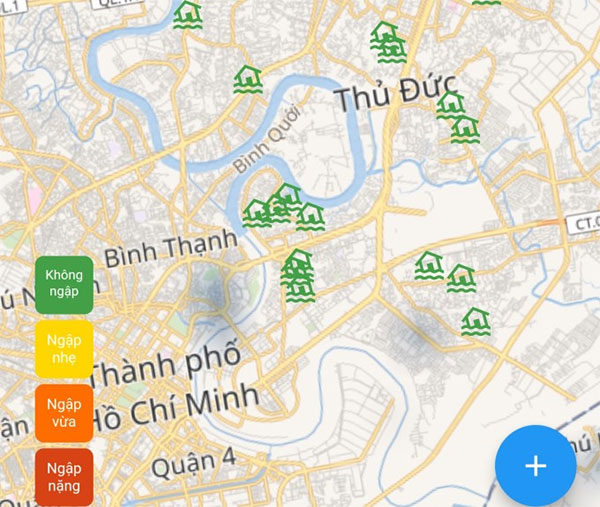Silicon Carbide Membrane Pressure Sensors for Flood Alerts Installed at 23 Locations in Thu Duc City, Allowing Real-Time Data Updates.
The sensors were developed by the Research and Development Center of the High-Tech Zone in Ho Chi Minh City since 2019 as part of the Aus4Innovation program in collaboration with Griffith University, Australia. At a technology introduction seminar on November 23, Master Nguyen Tuan Khoa, a representative from the research unit, stated that while conventional pressure technology typically uses silicon materials for flood alerts, the silicon carbide membrane offers higher sensitivity and stability, providing more accurate flood information feedback.
The sensors are installed in auxiliary wells constructed next to drainage systems based on a communicating vessel principle. As water levels rise, the water pressure acts on the sensor membrane and transmits flood alert data to a server via a signal converter. The data is displayed on a mobile application and website, enabling residents to be informed about flood conditions in each area and choose appropriate travel routes. Under dry conditions, the sensors transmit data once every hour, and during rainfall, updates occur every five minutes.

Flood alert sensors developed by the Research and Development Center of the High-Tech Zone in Ho Chi Minh City. (Photo: NVCC)
Currently, flood alert stations are installed at 23 locations in Thu Duc City and three tidal measurement points in Districts 8 and 12, as well as Phu An Station. According to Mr. Khoa, despite operating outdoors, the sensors have a relatively high durability, requiring cleaning approximately every six months to ensure stable and accurate operation.
From the system’s data, management agencies can assess the flood situation in the area, implement appropriate urban infrastructure management strategies, and allow residents to recognize flood-prone areas in real-time, enabling them to plan suitable travel routes and share flood information with the system to enhance data sources.
“Currently, the data is integrated into the Smart Operation Center of Thu Duc City,” Mr. Khoa said, adding that upon successful implementation, they will continue the project with Nha Be District and several other districts. Based on this technology platform, the research team indicated that they could develop applications for monitoring saltwater intrusion, erosion in canals, water quality assessments through analysis of components in factories or industrial zones, and automatic meteorological monitoring…

Sensors installed in wells constructed next to the main drainage system. (Photo: NVCC)
Mr. Nguyen Duc Tuan, Acting Director of the Information and Statistics Center under the Department of Science and Technology of Ho Chi Minh City, evaluated that the advantage of this domestically manufactured device lies in its integration of multiple monitoring features, including water levels, rainfall, and temperature. This allows for effective measurement of flooding and tidal conditions, significantly aiding flood management and hydrometeorological tasks. “We are ready to connect the product development team with units in need to facilitate information exchange and technology transfer for wider application of the product,” Mr. Tuan said.

Locations of flood measurement stations displayed on mobile phones help residents identify flooded areas and the extent of flooding. (Screenshot).
On the business side, Mr. Ngo Quang Hieu, Director of Dai Nam Environmental Company, mentioned that the company is consulting on automatic environmental monitoring solutions, including air and water quality. Currently, the company is importing some foreign sensors to implement these solutions.
Mr. Hieu expressed a desire for domestic sensor solutions that are effective but also noted that environmental monitoring sensors operating in polluted water with high hardness will accumulate substances within just a few days, affecting quality. “There needs to be a plan for sensors to operate in various environments,” Mr. Hieu said.


















































